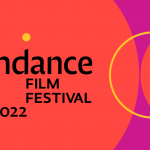A Scottish lord becomes convinced by a trio of witches that he will become the next King of Scotland, and his ambitious wife supports him in his plans of seizing power.
Chuck says:
At times resembling a horror film more than a staid retelling of William Shakespeare’s oft told tragedy, Joel Coen’s “The Tragedy of Macbeth” is a staggering take on the classic tale. Powered by solid performances from its veteran cast, the film is a triumph of production design, Coen and his crew having created a closed off, nightmare world of shadows and fog. This powerfully underscores the notion that not simply the titular character, but all involved are hemmed in by forces beyond their control, that their actions and thoughts are not so much theirs, but playthings bandied about by those with powers much greater than ours.
There’s a sense of urgency to this production as Coen, in adapting the play, has stripped the story down to its barest bones. The titular character’s headlong journey towards his doom is even more pronounced as this version focuses exclusively on him (Denzel Washington) and Lady Macbeth’s (Frances McDormand) ill-advised machinations that are put in play to help realize the future prophesized by the cryptic witch(es) he encounters when returning from battle. The second scene in which the warrior and his brother-in-arms Banquo encounter (Bertie Carvel) the sorceress is a stunning moment. Dancer Kathryn Hunter contorts her body and employs a chilling rasp while delivering the character’s dire predictions, all the while Coen employs visual trickery to make the actress seem as if she is one person and three at the same time. It’s a moment that serves notice, informing the viewer as to what Coen’s approach to the story will be. He keeps the viewer on their heels throughout, subtly and gradually creating a sense of dread the comes to permeate the entire film.
Cinematographer Bruno Delbonnel is the unsung hero here. Borrowing heavily from the films of the German Expressionism era, he creates a hemmed-in environment that steadily closes in on the characters. Painting with light and shadow, as well as employing long vertical and horizontal columns and pillars throughout, the sense of claustrophobia, stressed as well by Coen’s use of the narrow, square-like aspect ratio, underscores the inescapable nature of Macbeth’s fate.
Taking on such roles as Macbeth and Lady Macbeth is a daunting task. How can a performer hope to bring a fresh approach to such well-known and oft-portrayed characters? Obviously, the two leads embrace that challenge and are up the task. Washington takes a while to warm to the role, his early scenes lacking the fire one would expect. However, once the murder of King Duncan (Brandan Gleeson) occurs, the actor kicks things into high gear, giving us not a Macbeth full of bluster but one who gradually begins to fray, a sense of fiery desperation setting in as his wife’s plan falls apart. McDormand’s trademark sense of strength is put to good use, not simply to bring the queen’s steely nature to the fore, but to make her downfall all the more tragic. Seeing this powerful woman fall prey to her own ambition result in a moment of poignancy is a tribute to the actor’s skill.
It would be foolish to regard this at the definitive film version of the play as purists would surely object to the omissions Coen makes. However, you’d be hard-pressed to find one that so accurately captures the power of Shakespeare’s tale. The sense of doom, accentuated both dramatically and visually, as well as the portrayal of the evil that dwells in the darkest hearts of humanity make this “Macbeth” hard to shake.
4 Stars




